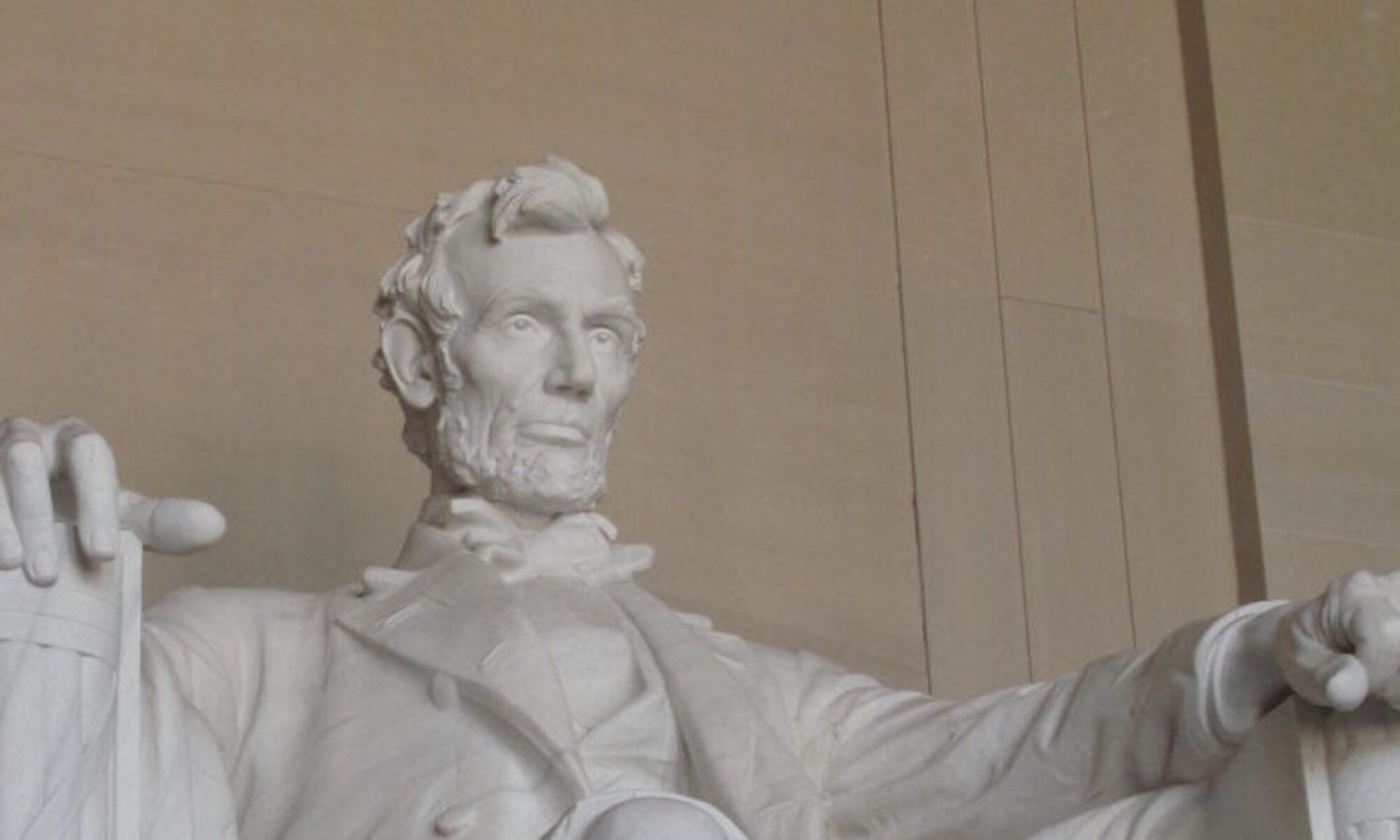After a very energetic effort of 45 postings in 50 days I am recharging my batteries away from all computers for a few days. I appreciate all the readers who have come on board and hope to provide soon new insights to digest and contemplate very soon , when I turn the darn machine back on. Until then, please visit the site, enjoy the previous posts, and feel free to comment. Your support for Ramparts is inspirational to me, and very much appreciated.
Now You Are Talking Some Real Money…
We are certainly hopeful that with our first jobs we can hope to pull down 1oo dollars a week spending money. As we graduate to professions we begin to consider a thousand dollars a week as a very successful marker for security and stability. The very few of us who have achieved specialized sought for occupations may hope for a cool six figures – one hundred thousand dollars a year that identifies us in the top seven percent of all wage earners. If we aggregate our life time earnings we can envision a million dollars or more over a twenty five to thirty year lifetime of salary. Then there is the highly gifted professional athlete that in rare cases can rake in 25 million or more a year. Lastly, the richest man on earth, Senor Helu’, owner of Mexican Telcom, is worth a staggering 53.5 billion. We can probably agree when we consider such a sum that it is simply unfathomable in size and scope. Perhaps it would be somewhat easier to focus upon if we consider the fact that Senor Helu’ has the equivalent sum that would allow him if so inclined to give each resident of Mexico, a country of 107, 550,000 residents, 497,000 dollars in generous gratuity – if so inclined, which he isn’t. Still, that is at least a way to visualize such a remarkable sum of value.
So, when the government of the United States remarks that it is on its way to its second consecutive year of over 1.4 Trillion dollars in debt, what can we do as regular old human beings to imagine what it is that we owe and should pay our debtors back – if we were so inclined, which we are clearly not. That is a real cunundrum – certainly there are trillions of bacteria, trillions of stars, trillions of atoms, and trillions of ways that the Chicago Cubs will find to blow any chance at a World Series in our lifetimes – all very difficult to visualize in scope. I don’t think we can mentally rap ourselves around such numbers, so I believe we are best served by returning to the value unit of the first one hundred dollars we earned. What would our hundred dollars look like if the United States had to line up one hundred dollar bills to pay its trillion dollar debt?
Unfathomable? Not so fast! Pagetutor.com has done us an enormous favor in providing scale to what we owe. Please follow their presentation and reflect on the trillion dollars a year we add to our debt, the 13.5 Trillion we owe to accumulated debt to our debtors, and the over 100 Trillion we owe in unfunded mandates.
Aspirin, anybody?
One Eyed Fat Man
The word is out that the the Coen brothers, filmmakers of such wonderfully idiosyncratic movies such as Raising Arizona, Fargo, and No Country For Old Men, are in the process of remaking the classic western True Grit. It follows that I would like to be the first in line to remark, what in the world are those Hollywood crazies up to now? Hollywood has become simply devoid of new story lines and capacities to interpret fundamental underpinnings of the American experience or culture. A woe be gone TV show of the 1960’s such as Batman is certainly safely open to revisionist thought as many times as Hollywood desires, but when the perfect synthesis of story, principle, acting craft, and entertainment comes together in a movie such as True Grit, as it has on other classics of the Hollywood’s past, do we really need a remake, however clever, to distort our initial and unique memory of a masterpiece?
The great adventure movies of the past rested on the principle of the inevitable testing of the the hero’s capacity to face and ultimately in some eventually disclosed fashion, triumph over evil. The heroes were often recognizable as better, stronger, more disciplined, braver than ourselves, and we feared for them in their crisis and cheered for them in their ultimate climatic battle. These characters were perfected by John Wayne’s westerns and he became a symbol of the innate strength and inherent goodness of the American hero. In 1969, Hal Wallis and Henry Hathaway envisioned a new American hero captured from the pages of Charles Portis’s novel and brought to the screen by the western icon Wayne in a fashion his fans were not used to seeing, a fat, foul-mouthed drunkard with money as a motive and a willingness to kill in ambush. The beauty of the story is the 14 year old character played by Kim Darby who expects to see justice done for the murder of her father and sees through the innumerable flaws of Wayne’s character Rooster Cogburn to the the primal heroic character within, emphasizing his capacity for deliverance in a trait she calls “true grit”. The movie has a spectacular set of supporting characters in addition to Darby including Robert Duvall, Glen Campbell, Dennis Hopper, Strother Martin, and Jeff Corey that bring the story the colorful layers that make it work so well, as well as the magnificent backdrops of the the Colorado San Juan Mountains around Ouray, Colorado.
The climatic scene thrusts us back to the classic moment of true heroism where the battle for the principle of right overwhelms all concerns for personal safety, ease, and odds of success. What is “true grit”, does it represent foolish sacrifice? Who benefits from the sacrifice from the hero, what do we learn about ourselves in the process in fashioning a plan of action for own own personal crises? Wayne answers the calling for all of us with the realization that whatever our personal flaws, we are all capable of recognizing right from wrong and living life more successfully, and more fulfillingly on principle and personal character. What ever the outcome, the journey of self realization proves most worthy when the principles are most clear. In the end, there are no elements of confusion to Rooster Cogburn’s stand.
To paraphase Robert Duvall…..that’s bold thoughts, from a one-eyed fat man.
Are Big Ideas A Thing of the Past?
Michael Barone has a thoughtful essay on our ability to conceive and create significant construction projects in today’s world. He bemoans a smaller bridge project in Washington DC that has been going on for 42 months with no end in sight. He compares it to the building of the Pentagon in the forties that as the largest building in the world at the time was conceived,constructed, and opened in less than three years. The number of similar current “big idea” morasses clumsily produced by the public sector brings forth the premise that we have lost the ability to conceive of the planning, coordination, and logistics that are required to bring big projects to fruition in a time frame that any individual would recognize as an achievement in their lifetimes. The “Big Dig” in Boston was an effort to reduce traffic congestion over a 3.5 mile stretch of central Boston conceived in the 1980’s, begun in 1991, opened in 2006 ,and an estimated 22 billion dollars later still being shaped by shoddy construction, leaks, ceiling collapses, and minimal improvement in traffic congestion. The “Deep Tunnel” project in Milwaukee invested billions and two decades in an effort to capture and treatment water runoff before it reached Lake Michigan – it has resulted in multiple sewage back-ups into homes with any steady rain and frequent needs to dump millions of gallons of raw sewage into Lake Michigan – not exactly the vision of its idealistic planners. The World Trade Center catastrophe stimulated the plans for a monumental restoration of the subway center, the skyscrapers, and a fitting memorial, all of which languish 9 years later in a state of paralysis and delay, with no conceived process for showing the necessary will to initiate and complete the project.
Have we lost the ability to work and sacrifice together as a nation to achieve the significant projects that benefit us all in order to focus only on our own security and gratification? Our government has become wholly interested in its control of the individual life, securing ifor the individual perceived freedom from want, responsibility, damaging health choices, and personal decision making capacity, at the expense of doing what it once did best – achieving the great ideas that were beyond any one individual or group, for the betterment of all. In 1931, the United States committed to the Boulder (Hoover) Dam project on the Colorado river, completing the dam by 1936, supply water and electricity to millions in the midst of a great economic depression. The total construction cost? -49 million – which paid for a 12oo foot long 726 foot high structure that 70 years later still generates 4.2 billion kilowatt/hours of electricity every year.

This clearly is not an issue about money, intelligence, capacity, workforce, imagination, or need. This remains a crisis of lack of will and overwhelming self-absorption. Can we once again achieve processes where strangulating regulations don’t destroy momentum and focus on the larger good, where important public needs are subjugated to the attack and erosion of personal needs, where corruption and shoddy leadership suffocate the realization of good ideas in reasonable time frames? It is truly the question of our time, and reflects on us all.
A Fine Man, a Wattwil Native Son
An especially favorite uncle passed today; he was a tremendous brother to my mother, a great friend to my father, a wonderful husband and father to his family. I want to especially honor him today by reflecting on how he brought his heimat – the love and attachment to a homeland – to me, a nephew with whom he struggled to share a language, but with whom he communicated perfectly the importance of loving one’s family, one’s roots, one’s country and land. He never lost the projection of wonder he felt for the shared experience with his family and the connection of the family to the physical surroundings. I want to share these places with you , and in some small way, thank him, for making it all come real for me.
He was born and raised in Wattwil, a textile town founded in the middle Ages in the valley of the Toggenberg in the canton St. Gallen in the country of Switzerland, framed by the mountains he loved and first presented to me, the majestic Santis to the north and the Churfirsten to the south. He introduced me to mountains as venerated places and as wonderful windows on the bigger world that dwarfs us all.




A religious man, he introduced me to the soaring accomplishments of spiritual builders of hundreds of years before, in the spectacular facades and cornices of the Benedictine monastery at Einsiedeln.
A physically fit and active man, he introduced me to skiing at Hoch -Ybrig and Engelberg and the wonders of hiking at Grindelwald and the End Of The World at Engelberg.



A family man, he introduced me to my wonderful cousins, who have brought me into their lives and successes and cemented in me forever the awareness of the connection of people overwhelming any obstacle of time or distance.
For all he brought all of us, I will miss him dearly, remember him always, and wish him so very well on his new journey.
A Gunslinger Greater Than Favre
As I warned you last month, the saga of Brett Favre has indeed evolved into another final curtain performance with the Minnesota Vikings this year. Now 40 years old, and soon in October 41, Favre is among a small group of warriors that extended their NFL careers into their fifth decade and an even smaller group that continued to change the playing field outcomes with their talent. I certainly wish him well, or at least good health, as he embarks on what he states is his “final” season.
In 1970 another ageless quarterback put together a season that even the gunslinger Favre would have a difficult time emulating. George Blanda managed to play in parts of 4 decades over 26 years in the American and National Football leagues, was an outstanding passer and kicker for the Chicago Bears, Houston Oilers, and Oakland Raiders, and is in the National Football League Hall Of Fame. Nothing, however, competes with the the year of comebacks and drama Blanda put together in 1970. On five consecutive late season games, Blanda at age 43 came off the bench to lead Oakland to 4 wins and a tie, each more scintillating than the last, with improbable last minute 4th quarter touchdowns and field goals , resulting in clutch performance perfection. Before the steroid era, 43 years of age might as well have been 53, and yet Blanda followed his 1970 performance by nearly willing his team to title game victory, scoring all 17 of his team’s points. The ageless one managed amazingly five more quality seasons retiring at 48, just short of 49, and having played in over 340 games and having scored over 2000 points. His coach John Madden remarked of Blanda that men over 40 never really liked him, because their wives would point to Blanda and say, “He’s throwing touchdowns at 45, why can’t you at least cut the grass?”
Brett Favre is likely to be the iron man of his era, starting over 300 games at one of the toughest positions on the field, quarterback, but George Blanda will always be the old warrior who invented “Clutch”. Next time Favre has the title in his sights, he may want to reflect back on the gunslinger who showed how to get it done in the final moments – every time.
The Centennial of Winslow Homer
The Portland Maine Museum of Art is hosting a large retrospective on the artwork of American artist Winslow Homer on the occasion of the 100th anniversary of his death. The exposition, “Winslow Homer and the Poetics of Place”, is highlighted in the New York Sun and focuses on Homer’s unique American gifts for translating the quiet but heroic dignity of regular citizens in their daily lives. Homer’s realistic technique, storied canvas settings, and understanding of water and man’s relation to it makes the consideration of a road trip to Maine a tempting prospect.
American art in the the first half of the 19th century lived with an inferiority complex in relation to its European cousins’ art tradition. The acknowledged talent was in protrait and generally a copied European style epitomized by the work of portraitists such as Gilbert Stuart. As the internal continent, however, was discovered by the new American nation, an increasing self awareness of the uniquely American panorama and story began to take hold. Artists such as Thomas Cole, Frederich Church, and Sanford Gifford romanticized the pristine and enormous scope of the American landscape that began to record the noble American countryside in a fashion as eternal as any European equivalent. This so called Hudson School began to create an American theme that was popular and commercial, and art progressively became a means of a proud American expression of nationhood.
Winslow Homer was something entirely different. His initial training was as an illustrator for the large American magazines such as Harper’s Weekly, where he perfected the craft of telling a complex story through single illustration. He learned of the importance of people to the visual story and became a mature artist and infinitely more serious projector of American society with his personal experience with the Civil War. He brought home to ten of thousands who read the weeklies the lives of soldiers and civilians in the epic conflict in such a way all recognized their own brethren in each compelling illustration. the seriousness of the conflict elevated Homer’s technique and more complex oil paintings became the norm. As a means of eventually separating himself from the tragedies of the battle conflict, he returned after the war to more intimate and pastoral scenes of women and children, that may have elevated the recent pain he felt, but had an underlying solemnity that defied the subject matter. The influence of French impressionism through Manet converted his oil technique to a style of more substantial tension and color in his paintings, epitomized by the ocean paintings, which captured man’s elemental struggle and the awesome power of the sea in an unforgettable fashion. Though the romance of the American West continued to be a theme in the successful paintings of such painters as Bierstadt and Moran, Homer never let the monumental story on the canvas overwhelm man’s position in it, and forever make him in my mind simply the more interesting American painter in comparison.
Winslow Homer’s paintings lie in every great American museum and he takes now a back seat to nobody in popularity. In a genra as silent as painting, his works virtually shout out the internal thoughts and emotions of the participants and codify their American roots in a way that elevates the American story for all of us – with quiet, quiet pride. Happy Anniversary, Winslow Homer.
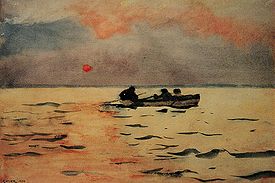
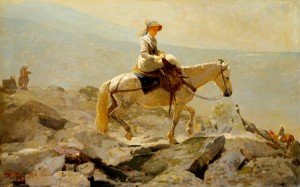
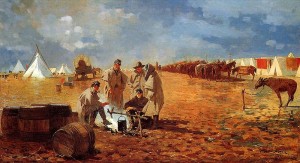

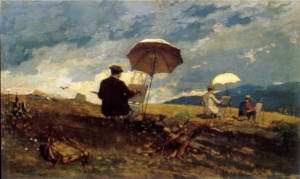
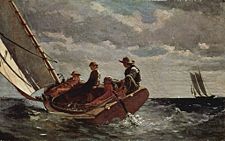
Los Lobos Han Sobrevivido, y Florecido
Over thirty years have passed since a group of rather unassuming but extremely talented musicians rose out of East Los Angeles to teach the the United States about the synthesis of culture, rhythm, tradition, and musicality. First and foremost the the band Los Lobos are musicians of the first order. David Hildago, the lead guitarist, has not met an instrument he can not play better than anyone, from the traditional guitars of the mariachi to the squeeze box of tejano music to the best lead rock guitar lines anyone has put forth. Cesar Ruiz has the tenor voice instrument that can recall the romance and heartbreak of the best cancion singer, or the growly power of American blues or rockabilly, with equal ease. Conrad Lozano, Louis Perez, and Steve Berlin bring the sound permanent depth of soul with equal virtuosity on the synthesizer, guitar, drum, and saxophone. It has come together for thirty years in such a wide expanse of musical recording that most casual listeners are unsure they are listening to the same band.
Los Lobos started as the neighborhood wedding band, but word spread fast that these kids could really play, and it was not long before they were playing progressive venues on the LA music scene in the early 1980’s with other relatively radical performers, such as Dwight Yoakam, exploring what has become known as roots rock. The album How Will The Wolf Survive? brought them to national prominence and critical acclaim in 1984, with its unique blend of roots rock, Mexican traditionalism , and sophisticated performance and lyrics. They achieved commercial success with La Bamba in 1987 and a new appreciation of hispanic influences in the music of Americas began to gain traction. Throughout they never left traditional sounds behind recording fresh and tight performances of traditional rancheras, cumbias, and nortenos that reminded audiences of the enormous depth of Latin musical culture. In 1991 Kiko shifted the direction of the music again to sophisticated rhythm and jazz influences, country, blues and rock, the essential panorama of the modern American musical experience. Albums have followed, equally as enthralling, but Kiko stands as an exemplary cross section of the American voice that will likely remain unequalled.
The wedding band boys from LA are now relatively elder musical statesmen, but each live performance continues to remind you that you are listening to performers for the ages. Take the time to listen to all they have to offer, and if you love great music as I do, you will likely find no time better spent.
Two Voices That Get It (aka Staying Out of the Cookie Jar)
Two relatively unknown heroes are emerging onto the American political stage. One is pugnacious, willful, and admits to a “weight problem”, the other is short, balding, thin, and prefers motorcycles to cars. Neither projects the stature of our current President, lacking the photogenic lines, baritone voice, and soaring rhetoric associated with our cinema influenced view as to how the perfect leader should present. They share in common truly only one thing – in an age of adolescent politics, they govern as adults.
Governors Chris Christie of New Jersey and Mitch Daniels of Indiana are presenting real difficulties to the reactionary governmentalists who like to paint every intellectual response to governance not including more government as somehow racist, uncaring, lacking in vision, or simply undoable in today’s complex world. The rabid attacks on each have somehow only seemed to reinforce their “adult” presence and popularity to the bewilderment of the governmentalists, to whom these tactics have always worked before.
The basic premise of governmentalist or statist logic has always been the assumption of the American society’s need for personal security. The need is first dressed in the form of a means of support during down times. Its continuous presence becomes a part of the society’s fabric and the temporary need becomes the assumed entitlement. The statist confirms inevitable growth of individual control by reminding the individual of a terrible world where the security blanket would be removed and the painful realities of life destroying the comfortable existence the individual must be entitled to. It is the story of the cookie jar. The young child has a problem; he wants a cookie, because he is hungry for something sweet. One cookie is provided because cookies are available and hunger is evil. One cookie does not seem to be enough to fill his hunger, and the child asks for more cookies. The cookie jar is filled with more cookies, but no amount of cookies seems to assuage the child’s hunger. At the end, the child cries, looks longingly into the empty cookie jar, and states, ” Now I have two problems – I am still hungry, and now I am fat.”
The adult answers for government are outlined by the two gentleman in different ways tempered for their local population and specific “cookie jar” problems. In his excellent essay on the two governors, Rick Moran goes into detail regarding the specific approaches used. The adult style of governance has some electoral legs but it is yet unclear as to whether the performance of these two politicians under very trying circumstances is looked upon as revolutionary by the voting public, or merely refreshing. Neither has yet declared a desire to take these principles to a higher plane, but neither has denied the possibility. Given the size and scope of our national cookie jar sized problems, its going to have to take someone with real adult sized mentalities to begin the process of educating the public that here is a perfectly good life feasible without cookies – and freer for the individual, without the hunger, and without the oppressive fat.
The Rant That Started It All
On Tuesday, August 10th, multiple party primaries took place across the United States as part of a steady stream of electoral nominations to occur over the next weeks promoting candidates to battle for election to the US Congress in November, 2010. Colorado’s Republican primary for Senate ended with Ken Buck, the so called “tea party” candidate, easily winning the nomination over the establishment Republican candidate to be the party’s standard barer in the upcoming statewide election in November. The “tea party” has proved to be a potent mix showing staying power and grassroots organization and support, upsetting on many occasions the expected victories of establishment candidates and positioning the movement to be an electoral force on par with major special interest groups.
What the “special interest’ all tea party advocates have in common is the question of the hour. The movement started from an seemingly innocuous morning broadcast of CNBC from the floor of the Chicago Board of Trade on February 19th, 2009. Rick Santelli, a CNBC reporter was listening to a debate regarding the proposed mortgage bail-out program of the Obama administration, the so-called Home Owners Affordability and Stability Plan. The conversation strained his capacity for tolerance for the expressed ideas and he went on a several minute rant regarding the outrage he felt for the concept, and the lack of respect by government for people who tried to meet their responsibilities and live within their means. He declared the time was at hand for a new tea party for those who felt the way he did to express their mutual outrage. The power of the internet provided exponential exposure to the rant and suddenly the concept of a new American tea party began to take hold across the nation. Initially an entirely spontaneous process, the organization of this concept has now grown to the point where it has the capacity of sponsoring winning candidates that espouse tea party “principles”, such as Mr. Buck in Colorado, Ms. Angle in Nevada, Mr. Rand Paul in Kentucky, and Mr. Ron Johnson in Wisconsin.
The success of the movement outside the control of the establishment parties has led to the inevitable establishment backlash. The Democratic liberal establishment looking at tea party participants sees only the darker shades of demagoguery, implied racism, and fasciistic nationalism. The Republican Washington establishment sees it as a threat to the status quo, an undisciplined group that will prevent the party from achieving diverse outreach, broad based solutions, and re-inforce the “looney toons” conservatism of flat taxes, guns, border control, and libertarian streaks they find so distasteful. The clear indication is that neither party has the capacity to control the tea party message, nor the ability to absorb its electoral power without being changed immeasurably by it. The power source of the tea party is a simple one – as seen by the tea party, the process of government has exceeded the parameters on which it was founded and threatens the principles of life, liberty, and the pursuit of happiness stated in the Declaration of Independence and encoded in the Constitution. In no small measure, arguments regarding the current controversies of our day framed by governmental expenditures and policies not including these principles are anathema to the tea partiers.
The future of the movement, either to disintegrate from internal division, or to propagate into a compelling force that changes America, will likely be prominently written by the outcome of the November election. If the tea party movement turns out to be the representation of the Silent Majority some claim for it, we will have had the unique advantage of having seen the moment of birth of history in as vivid and precise a pivot point as has ever been recorded.
